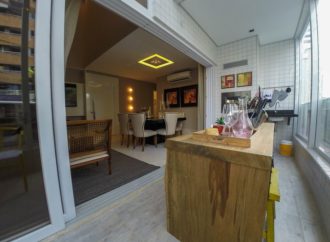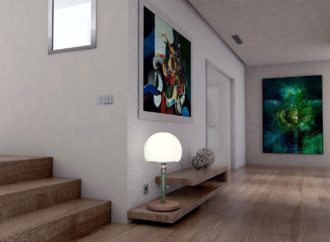Bauhaus was a German school of art and architecture founded in 1919 in Dessau, Germany, by Walter Gropius, Ludwig Mies van der Rohe, Hannes Meyer, Marcel Breuer, Ludwig Hilberseimer, Josef Albers and Josef Hoffman. The founders were all connected through their study at the School of Applied Arts and Crafts in Munich, where they graduated
Bauhaus was a German school of art and architecture founded in 1919 in Dessau, Germany, by Walter Gropius, Ludwig Mies van der Rohe, Hannes Meyer, Marcel Breuer, Ludwig Hilberseimer, Josef Albers and Josef Hoffman.
The founders were all connected through their study at the School of Applied Arts and Crafts in Munich, where they graduated between 1908-1913. In addition to being inspired by the Art Nouveau movement, they were also heavily influenced by European designers such as Auguste Rodin, Henry van de Velde, Charles Rennie Mackintosh, Le Corbusier, Paul Klee and Wassily Kandinsky. All of these artists had a distinct influence on the philosophy of the group.
The term Bauhaus is German for “building house” (house of arts) and referred to the group’s desire for a unified aesthetic based on functionalism and simplicity. Bauhaus was influential in the fields of design, furniture, architecture, graphic design, ceramics, painting, sculpture, film, textiles, music, education and typography.
The term ‘Industrial Design’ refers to how design can create products that reflect the personality of the brand. It encompasses product research, ergonomic considerations, and user centeredness. Industrial design considers functionality, cost effectiveness, quality, environmental sustainability, ease of assembly, and aesthetics. It seeks to create something that works well, looks good, and serves its purpose. Industrial design focuses on the long-term usefulness of the object rather than short-term profit margins.
In general, design is about solving problems. Product designers work closely with engineers, marketers, scientists, and other disciplines to solve problems and meet consumer needs. Their job is not only to create objects that look nice, but to make sure that they function properly and last a long time. Industrial design differs from traditional design in that it deals with mass production and engineering issues. Its goal is to produce quality, durable, affordable goods that conform to industry standards, while simultaneously meeting the needs of individual consumers. Industrial design tends to incorporate a variety of skills and knowledge that go beyond those necessary to achieve traditional design goals.
Minimalist style emerged around 1950 when American architect Richard Neutra moved his practice to Los Angeles. He became interested in the work of Swiss designer Max Bill who advocated a simple approach to design and the use of natural materials. He believed that modern technology was interfering with our appreciation of nature and called for returning to a simpler lifestyle. His ideas were popular among California architects in the early 1950s including John Lautner, Joseph Esherick, Edward Durrell Stone, Welton Becket, William Turnbull and others.
Neutra’s influence spread throughout Europe especially since he worked extensively in Europe during the late 1960s and 1970s. One of the first minimalist buildings was the Bauhaus Dessau designed by Walter Gropius and Hannes Meyer. Bauhaus Dessasn is now a museum dedicated to the German school of architecture. Other examples of minimalist design include Frank Lloyd Wright’s Fallingwater, the home of Edgar Kaufmann Jr., located near Pittsburgh, Pennsylvania; the Glass House, designed by Louis I Kahn in New Canaan, Connecticut; the Gamble House by Howard Van Doren Shaw in Pasadena, California; and Philip Johnson’s Glass House, in New Canaan, Connecticut.
Other famous architects who incorporated designs with the minimalist style included Eero Saarinen, Pierre Chareau, Gordon Bunshaft, Gunnar Birkerts, David Libeskind, Steven Holl, Richard Meier, Rem Koolhaas, and Zaha Hadid. These architects’ works range from midcentury modern houses to skyscrapers and public buildings.
In recent years, minimalist design has become increasingly popular. The popularity grew especially after the September 11 attacks in 2001 when many people began to search for ways to avoid what happened. Minimalist design is often applied to commercial spaces where people want to feel safe and cared for. Examples include restaurants, hotels, retail stores, banks, airports, and office buildings. It has even been applied to homes, offices, and transportation systems.
In the beginning of the 20th century, the Bauhaus School was considered one of the finest schools of art and architecture in the world. It taught students to think critically and creatively about design, architecture and construction. Many of the students went on to found their own architectural practices. Others joined firms or went on to become professors.














Leave a Comment
Your email address will not be published. Required fields are marked with *